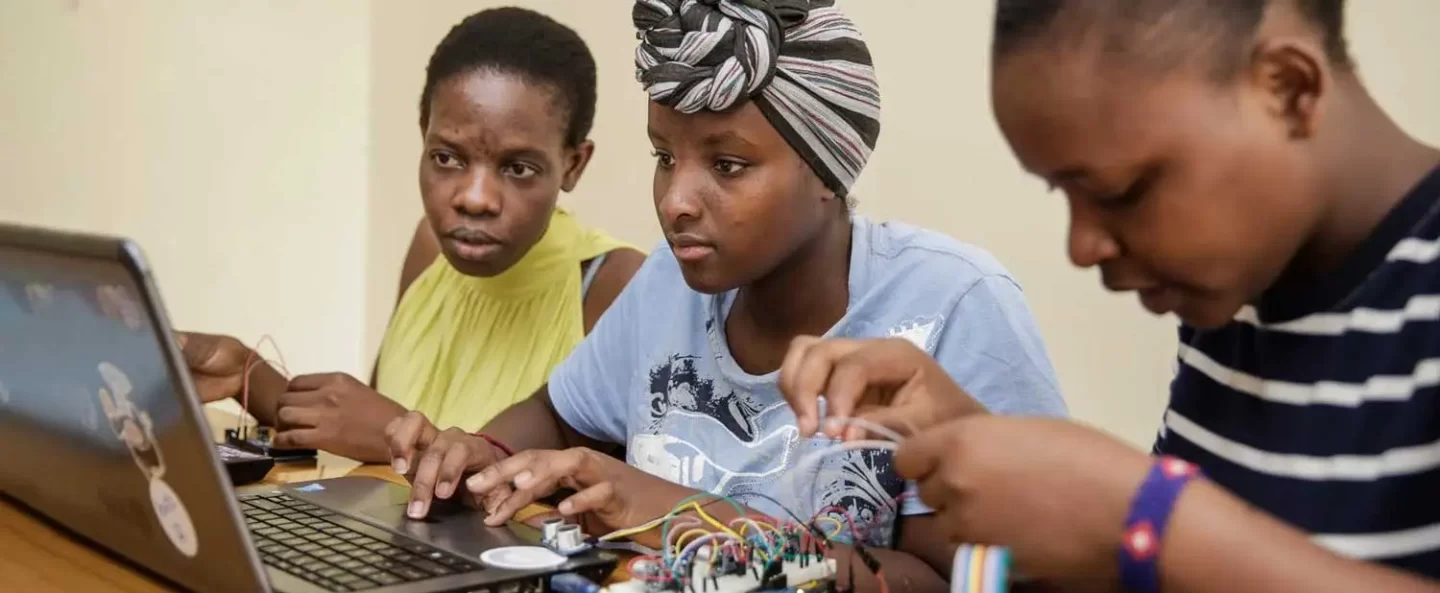February 11th is a special day for the scientific community. It celebrates the International Day of Women and Girls in Science. To celebrate this special day, we are delighted to have a conversation with Gloria Katunge. Gloria is an outstanding young woman from Kenya whose pursuit of excellence in STEM has taken her from Nairobi to New York.
Although Kenyans have an impressive record of scientific publications and research, only 26 per cent of Kenyan researchers are women in 2010 (UNESCO Institute for Statistics ,2015). Currently, only 21.4% of females are in STEM careers. Unfortunately, this imbalance is even more visible in the engineering sector. Here, out of 2,501 registered professional engineers, only 211 are women, a depressing 8.4%.
As we talk with Gloria, we see her experience is proof to the resilience and brilliance of women in STEM. This, despite the urgent need to build a more inclusive and diverse future in these fields.
Q1. Hi Gloria, could you please tell us a bit about yourself and your background?
Greetings, I’m Gloria, coming from a humble upbringing in Kenya. I earned both my bachelor’s and master’s degrees in physics from the University of Nairobi. I am passionate about solar energy. I’m eager to make meaningful contributions to society through my expertise in this field.
Q2. What motivated you to choose physics for your studies at the University of Nairobi? Were there any challenges you faced?
I was inspired to pursue physics at the University of Nairobi due to its vast potential for innovation and impact. The challenges I encountered along the way included navigating financial constraints, societal expectations, and limited resources. Despite these hurdles, my determination and passion for the field drove me to overcome them and pursue my academic goals.
Q3. We noticed you also achieved the certificate in PV design at WTS Training Center. What drove you to get skilled in solar energy?
I pursued the certificate in PV design at WTS Energy Kenya International Training Center because of my deep passion for solar energy. I had prior training on the same but wanted to expand my knowledge in solar installation, sizing, commissioning and troubleshooting. There was also the need to network with my fellow advocates for solar energy.
Q4. What are you currently working on?
Currently, I’ve just completed an internship at Brookhaven National Lab, and I’m fully immersed in my solar project back home. Specifically, I’m focusing on developing solar-powered water pumping systems aimed at addressing local water supply challenges. In addition to doing small scale farming. This project aligns perfectly with my passion for solar energy and my desire to make a tangible difference in my community.
Q5. How did the opportunity to conduct research in New York come about? How did your education contribute to your professional development?
The opportunity to conduct research in New York arose through my involvement in the African School of Physics conference held in South Africa in 2022. Through my active participation in the school, I was selected along with other African students to partake in an incredible six-month learning experience at Brookhaven National Lab. My education, particularly my background in physics and materials science, equipped me with the necessary knowledge and skills to excel in this research opportunity, contributing significantly to my professional development.
Q6. What are your future career goals, and how do you plan to continue your professional development?
My future career goals include obtaining a PhD to further deepen my expertise in solar energy and materials science. I’ve already applied to several schools and am eagerly awaiting their feedback this month. Beyond academia, I aim to apply my research and practical experience to contribute to the development of sustainable energy solutions on a global scale. To continue my professional development, I plan to actively engage in research, and seek out opportunities for collaboration with experts in the field.
Q7: Do you think that it is getting easier nowadays for Kenyan women to be involved/study/work in STEM fields? Why or why not?
Yes and no…. There has been some progress, but challenges still exist for Kenyan women pursuing STEM fields. Efforts to promote gender equality and diversity in STEM have led to increased awareness and opportunities for women. Initiatives such as scholarships and mentorship programs have helped break down barriers and encourage more women to pursue careers in STEM. I am a beneficiary of these scholarships and mentorship programs.
Gloria Katunge
Licensed Solar PV Technician-T3
and Researcher
Initiatives such as scholarships and mentorship programs have helped break down barriers. However, we still face significant obstacles, such as cultural norms, societal expectations, and limited access to resources and opportunities.
However, we still face significant obstacles, such as cultural norms, societal expectations, and limited access to resources and opportunities. Unfortunately, profound gender stereotypes and biases often discourage women from pursuing STEM fields or hinder their advancement once they do.
Q8. In celebration of the International Day for Women and Girls in Science, what steps do you believe can be taken to encourage more women and girls to pursue careers in STEM fields, both in Kenya and globally?
I think a crucial step involves showcasing successful female role models. Media coverage, public events and school programs are a good medium to achieve this. By highlighting the remarkable achievements of women in STEM, we not only bring visibility to their accomplishments but also inspire and motivate young girls to pursue similar career paths.
Besides, financial barriers should never hold back the educational and career aspirations of women and girls in STEM. A great strategy is to offer targeted financial support, grants, and fellowships that are designed specifically for females who are pursuing STEM education and careers. I have benefited from these scholarships. By reducing the financial burden of education, we can ensure that talented, motivated people, regardless of their economic background, have an equal opportunity to excel in STEM.
Lastly, to build partnerships between governments, educational institutions, private sector organizations and non-governmental organizations (NGOs). These partnerships can facilitate the implementation of initiatives that promote gender equality in STEM education and employment. By bringing together different stakeholders, we can address systemic challenges, promote mentoring programs and develop comprehensive strategies to create an inclusive and empowering environment for women and girls pursuing STEM careers.
Achievements of women like Gloria’s on this International Day of Women and Girls in Science are worth showcasing as they bring a light of hope for women around the world looking to pursue a career in STEM. Many congratulations, Gloria!




